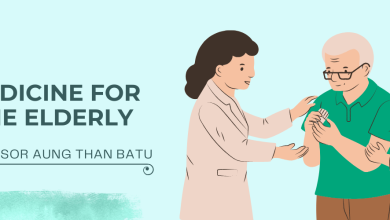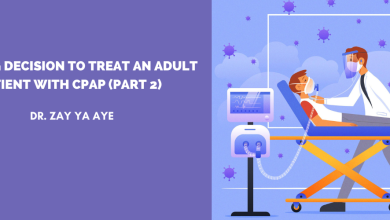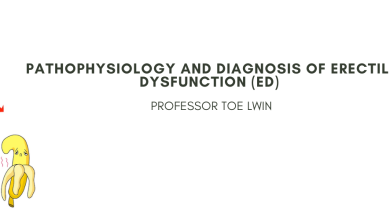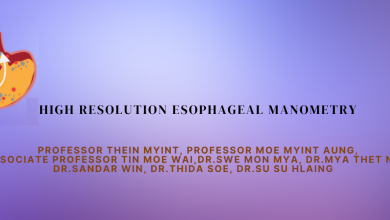In the final article of the ‘Approach to Pediatric Neurology Signs and Symptoms’ series, I discussed the systematic evaluation of chorea in children, a common movement disorder. To maintain a structured approach, I applied the “CELE” framework, which includes:
- C – Confirmation by identifying Characteristic features, Constellations, and Clues
- E – Emergency considerations
- L – Localization of the site of the lesion
- E – Evaluation for Etiology
This article focuses on the approach to children presenting with dystonia, a complex and often challenging movement disorder. Once again, I will apply the “CELE” framework to assess and manage these cases.
Dystonia: Definition and Phenomenology
Dystonia is a movement disorder characterized by sustained or intermittent muscle contractions that cause abnormal, often repetitive, movements or postures. These movements are typically patterned, twisting, or tremulous and can affect various parts of the body, including the limbs, face, neck, and trunk. The key feature of dystonia is that it involves involuntary muscle contractions that lead to abnormal postures or movements, often precipitated or worsened by voluntary movement.
Applying the “CELE” Framework to Dystonia in Children
C – Confirmation
The first step in evaluating a child presenting with dystonia is to confirm the diagnosis clinically by identifying the characteristic features of dystonia:
Characteristic Features of Dystonia:
- Sustained or Intermittent Muscle Contractions: Dystonia involves abnormal muscle contractions that are sustained or intermittent, leading to abnormal movements or postures affecting any body part. These may be associated with abnormal postures, such as in cervical dystonia.
- Patterned and Twisting Movements: Movements are often twisting and patterned, typically slow and sustained with a relatively long duration.
- Tremulous Movements: Some dystonic movements include irregular, jerky tremors (dystonic tremor), often task-specific(e.g., during writing).
- Exacerbation with Voluntary Action: Dystonia is often triggered or worsened by voluntary movements, including action dystonia and overflow dystonia (extension to nearby muscles).
- Overflow Muscle Activation: Contractions can spread to non-target muscles, especially at the peak of dystonic movements.
- Rhythmic vs. Irregular: Dystonic movements are irregular and may be tremulous, but they are not rhythmic.
- Sleep-Related: Dystonia typically disappears during deep sleep.
- Awareness: Patients are generally aware of the movements and do not lose consciousness.
- Suppressibility: Dystonia is not suppressible by voluntary control.
- Triggers: Dystonia may appear at rest, or be triggered by voluntary actions, and is worsened by stress, fatigue, or fever. Sensory tricks (e.g., light touch) can provide temporary relief.
- Associated Features: Often associated with hypertonia, dystonia may coexist with other movement disorders, like tremor or myoclonus.
There are conditions, such as spasticity, seizures and functional movement disorder that can mimic dystonia, so they should be ruled out clinically. The table below describes the key differences between dystonia, spasticity, and seizures and functional movement disorder:


Once dystonia is confirmed, the next step is to classify it based on age of onset, body distribution, and other features:
- Age of Onset:
- Childhood Onset: Dystonia that begins in childhood is often genetic or idiopathic. It tends to progress from focal to generalized, with early-onset dystonia usually affecting the legs first, then spreading to other body areas. However, they can be secondary to other conditions (such as cerebral insults), including birth asphyxia, bilirubin encephalopathy, brain infections, and more. These conditions are common in resource-limited countries like Myanmar.
- Adult Onset: In contrast, adult-onset dystonia are typically focal, often involving the neck, face, or upper limbs.
Body Distribution:
- Focal: Affects a single body region (e.g., cervical dystonia affecting the neck, blepharospasm affecting the eyes, or writer’s cramp affecting the hand).
- Segmental: Involves two adjacent regions, such as cranial dystonia (involving both the eyes and mouth).
- Generalized: Affects the trunk and at least two other body regions. Generalized dystonia can result in abnormal postures or flexion/extension of the trunk.
- Multifocal: Affects two or more non-adjacent regions, typically seen in early-onset isolated dystonia.
- Hemidystonia: Affects multiple regions on one side of the body, often due to an acquired cause (such as a basal ganglia lesion).
Temporal Features:
- Task-Specific: Some dystonic movements are task-specific (e.g., writer’s cramp), worsening only during particular actions or activities.
- Overflow: Activation of muscles in one area can trigger dystonic movements in adjacent or non-adjacent body parts (known as the overflow phenomenon).
- Diurnal Variation: Dystonia can worsen throughout the day (e.g., dopa-responsive dystonia) and may improve after sleep.
Isolated vs. Combined Dystonia:
- Isolated Dystonia: Occurs when dystonia is the primary movement disorder, with or without accompanying tremor.
- Combined Dystonia: Occurs with other movement abnormalities such as parkinsonism, myoclonus, and may be associated with additional neurological symptoms (e.g., seizures, cognitive impairment).
By confirming the signs and symptoms, classifying the condition, and identifying potential differential diagnoses such as spasticity or seizures, clinicians can ensure a thorough and effective evaluation of dystonia in pediatric patients.
E – Emergency Considerations
Although dystonia is generally a chronic and progressive condition, there are certain emergency situations that may arise. These include:
- Acute Dystonic Reactions: These can occur after the use of antipsychotic medications (e.g., haloperidol, risperidone) or antiemetic medications (e.g., metoclopramide, prochlorperazine). Acute dystonic reactions typically present with sudden-onset, sustained muscle contractions that may involve the face, neck, or limbs, causing severe discomfort or even airway compromise. Immediate intervention is required, usually with anticholinergic agents (e.g., diphenhydramine or benztropine) to alleviate symptoms and prevent further complications.
- Oculogyric Crisis: This is a type of acute dystonic reaction that is particularly common in children. It is characterized by a sustained upward deviation of the eyes, often accompanied by neck and facial dystonia. It can be triggered by the use of antipsychotic or antiemetic medications and may mimic a seizure due to the sudden onset of eye deviation, along with associated agitation or muscle rigidity. Prompt treatment with anticholinergic agents (e.g., diphenhydramine or benztropine) or diazepam is often effective in resolving the crisis. Recognition of oculogyric crisis as a non-seizure emergency is important to avoid unnecessary investigations or treatments for seizures.
- Severe or Sustained Dystonia: If dystonia progresses to status dystonicus — a severe, prolonged episode of dystonic movements unrelieved by standard treatments — this constitutes a medical emergency. Status dystonicus can cause significant discomfort, muscle damage, myoglobinuria, acute renal failure, and autonomic instability. Immediate intervention is required to address these complications and prevent further harm.
- Respiratory Compromise: When dystonia affects the muscles of respiration (e.g., diaphragmatic dystonia or laryngeal dystonia), there is a risk of respiratory distress. This requires urgent evaluation and management, often in an intensive care setting. Timely intervention is critical to ensure airway protection and adequate oxygenation.
L – Localization of the Site of the Lesion
Localization is particularly important in cases of focal, segmental, or unilateral dystonia, as these forms may be caused by focal brain pathology, such as tumors or vascular lesions. Dystonia can result from dysfunction at multiple levels of the nervous system, so identifying the site of the lesion is crucial for both diagnosis and management.
Key Localization Areas:
1. Basal Ganglia
Dysfunction in the basal ganglia is the most common cause of dystonia, particularly generalized forms. Lesions or abnormalities in areas such as the putamen, globus pallidus, and subthalamic nucleus are typically associated with dystonic movements. Focal dystonia, such as cervical dystonia or blepharospasm (eyelid dystonia), are also linked to basal ganglia dysfunction.
- Clinical Clues:
- Symptoms are often focal or segmental.
- May be accompanied by tremor, bradykinesia, or rigidity.
- Response to dopaminergic or anticholinergic treatment.
2. Cortex and Thalamus
Dysfunction within cortical or thalamo-cortical loops may contribute to dystonic symptoms. Dystonia originating in these areas is often associated with a more diffuse distribution, affecting multiple body regions.
- Clinical Clues:
- Dystonia is more diffuse, affecting multiple body parts.
- May present with seizures, cognitive changes, or sensory deficits.
- MRI may show cortical or subcortical abnormalities.
E – Evaluation for Etiology of Dystonia
The evaluation of dystonia requires a comprehensive approach, considering several key factors that can identify the underlying etiology. These factors include:
- Age of Onset
- Mode of Onset and Time Course (acute, subacute, insidious, or paroxysmal)
- Distribution of Symptoms (focal, hemi, or generalized)
- Associated Neurological and Systemic Signs/Symptoms (suggesting secondary dystonia)
Recognizing these features is crucial for identifying potentially serious, treatable underlying conditions, such as structural brain lesions, metabolic disorders, drug-induced dystonia, genetic dystonia, and other causes.
Key Factors in Etiology Evaluation:
1. Age of Onset
The age at which dystonia first manifests plays a significant role in guiding the differential diagnosis.
-
- Perinatal/Early Onset
Early-onset dystonia are often associated with perinatal injuries and can be linked to conditions such as dyskinetic cerebral palsy (particularly the dystonic or mixed type), neurometabolic diseases, or acquired/secondary causes during development.
- Older Child or Adolescent Onset
- Perinatal/Early Onset
In older children, acquired causes are common, but genetic and primary dystonia may present later. Additionally, late-onset neurometabolic or hereditary disorders can emerge, and psychogenic or functional dystonia should also be considered.
2. Mode of Onset and Time Course
The mode of onset (acute, subacute, chronic, or paroxysmal) and time course of dystonic symptoms provide important clues to the underlying etiology.
-
-
- Acute/Subacute Onset
-
Sudden or rapid onset of dystonia suggests acquired or secondary causes. These may include:
-
-
- Infectious/Post-infectious causes, such as viral encephalitis, autoimmune encephalitis, or encephalopathy.
- Demyelination, as seen in conditions like multiple sclerosis.
- Drug-induced dystonia, including neuroleptic-induced and oculogyric crisis.
- Vascular lesions (e.g., stroke, ischemia).
- Space-occupying lesions (SOL), such as brain tumors or abscesses.
- Acute episodes may also mark the initial onset of chronic or paroxysmal dystonia in some patients.
- Insidious/Chronic Onset
-
Dystonia with a gradual, insidious onset typically points toward more chronic or progressive conditions. These include:
-
-
-
-
- Cerebral Palsy, particularly the dyskinetic or mixed type.
- Genetic/Primary Dystonia, such as DYT1 dystonia or other inherited forms of dystonia.
- Neurometabolic diseases, including Wilson disease, neuroacanthocytosis, and mitochondrial disorders.
- Paroxysmal Onset
-
-
-
Episodic or intermittent dystonia suggests a paroxysmal etiology. This includes:
-
-
-
-
- Paroxysmal Kinesigenic Dyskinesias (PKD) and Non-Kinesigenic Dyskinesias (NKD), both of which occur suddenly, with PKD triggered by movement and NKD occurring without clear external triggers.
- Paroxysmal Exercise-Induced Dystonia, typically provoked by physical activity.
- Dopa-Responsive Dystonia (DRD), a condition with episodic dystonic episodes that respond to dopaminergic treatment.
- Alternating Hemiplegia of Childhood (AHC), characterized by alternating hemiplegia and paroxysmal dystonia episodes.
- Psychogenic or Functional Dystonia, where episodes fluctuate and can be triggered by psychological or emotional stress.
- Diurnal Variation
-
-
-
Certain forms of dystonia exhibit a diurnal pattern, with symptoms worsening during the day or in the evening and improving after rest or sleep. This pattern is notably seen in Dopa-Responsive Dystonia (DRD), where the symptoms often improve with dopaminergic therapy.
3. Distribution of Symptoms
The pattern of symptom distribution is another important consideration in determining the cause of dystonia.
-
-
-
-
- Focal or Segmental Dystonia
-
-
-
These localized forms of dystonia can be caused by various factors, including:
-
-
-
-
- Drug-induced dystonia, such as oculogyric crisis or tardive dystonia.
- Blepharospasm (eyelid dystonia).
- Cervical dystonia (torticollis).
- Writer’s cramp (focal hand dystonia).
- The onset of more generalized dystonia may follow a focal onset in some cases.
-
- Hemi-Dystonia
-
-
-
When dystonia is localized to one side of the body, it may be caused by:
-
-
-
-
- Structural lesions of the basal ganglia, including stroke or tumors.
- Genetic/primary dystonia, such as those seen in DYT1 or DYT6 dystonias.
- Alternating Hemiplegia of Childhood (AHC), which may present with hemi-dystonia as part of its episodic symptoms.
-
- Generalized Dystonia
-
-
-
Generalized dystonia, involving widespread muscle involvement, is often seen in conditions such as:
-
-
-
-
- Dyskinetic Cerebral Palsy (particularly in children with mixed or dystonic types).
- Genetic/primary dystonia, including inherited forms like DYT1 dystonia or torsion dystonia.
- Neurometabolic diseases, including Wilson disease, mitochondrial disorders, or neuroacanthocytosis.
-
-
-
4. Associated Neurological and Systemic Signs/Symptoms
Secondary dystonia often present with additional neurological or systemic signs that may help identify the underlying etiology. Symptoms such as cognitive changes, seizures, or sensory disturbances may suggest a metabolic or neurodegenerative cause. Systemic signs, such as hepatic dysfunction or movement abnormalities (e.g., parkinsonism), may point toward specific conditions like Wilson disease or other neurometabolic disorders. Associated cardiac or joint signs and symptoms indicate possible acute rheumatic fever.
The evaluation of dystonia requires a thorough assessment of key factors such as age of onset, mode of onset and time course, distribution of symptoms, and associated neurological and systemic signs. By considering these elements, clinicians can identify the underlying etiology and determine appropriate management strategies. This approach is essential for distinguishing between primary and secondary causes and recognizing treatable conditions like dopa-responsive dystonia, metabolic disorders, or drug-induced dystonia.
Summary
This article provides a comprehensive approach to dystonia in children using the “CELE” framework, which includes Confirmation, Emergency considerations, Localization of the lesion, and Evaluation for etiology. Dystonia is defined as a movement disorder characterized by sustained or intermittent muscle contractions causing abnormal postures or movements. Key diagnostic features include twisting movements, tremors, and exacerbation by voluntary actions. Classification of dystonia is based on factors such as age of onset, distribution (focal, segmental, generalized), and temporal features (e.g., diurnal variation, paroxysmal episodes). Emergency considerations include acute dystonic reactions (e.g., oculogyric crisis) and severe episodes like status dystonicus, which require immediate treatment. Localization helps identify the site of lesion, with basal ganglia dysfunction commonly associated with focal or generalized dystonia, and cortical or thalamic dysfunction linked to more diffuse forms. The evaluation for etiology focuses on age of onset, mode of onset (acute, chronic, paroxysmal), and distribution of symptoms, guiding differential diagnosis toward conditions such as cerebral palsy, genetic dystonia, or metabolic disorders. A thorough understanding of these factors is essential for accurate diagnosis, effective management, and treatment of underlying conditions.


References
- Albanese, A., Bhatia, K., Bressman, S.B., DeLong, M.R., Fahn, S., Fung, V.S.C., Hallett, M., Jankovic, J., Jinnah, H.A., Klein, C., Lang, A.E., Mink, J.W. and Teller, J.K., 2013. Phenomenology and classification of dystonia: A consensus update. Movement Disorders, 28(7), pp. 863-873.
- Brandsma R, van Egmond ME, Tijssen MAJ; Groningen Movement Disorder Expertise Centre. Diagnostic approach to paediatric movement disorders: a clinical practice guide. Dev Med Child Neurol. 2021 Mar;63(3):252-258. doi: 10.1111/dmcn.14721. Epub 2020 Nov 5. PMID: 33150968; PMCID: PMC7894329.
- Fernández-Alvarez E, Nardocci N. Update on pediatric dystonias: etiology, epidemiology, and management. Degener Neurol Neuromuscul Dis. 2012 Apr 11;2:29-41. doi: 10.2147/DNND.S16082. PMID: 30890876; PMCID: PMC6065605.
- Geyer, H.L., Bressman, S., Comella, C., et al., 2006. The diagnosis of dystonia. The Lancet Neurology, 5(9), pp. 780-790.
- Gorodetsky, C. and Fasano, A., 2022. Approach to the treatment of pediatric dystonia. Dystonia, Article 10287. [online] Available at: https://doi.org/10.3389/dyst.2022.10287
Author Information
Kyaw Linn
Professor, Paediatric Neurology
Senior Consultant Paediatrician







